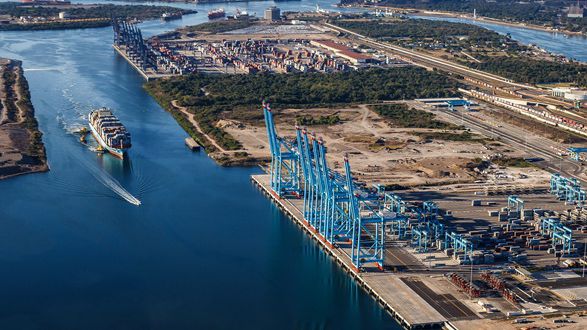APM's Lazaro Cardenas Terminal Receives First Ship

APM Terminals' new $900 million container facility at the Port of Lazaro Cardenas has opened for business with the arrival of its first vessel, the 8,800 TEU Maersk Salalah.
The new deepwater terminal has a depth alongside of 54 feet, enough to accommodate the largest ULCVs. Its first phase has a design capacity of 1.2 million TEU, an amount equal to 50 percent of the port's current annual volume, and at full buildout it will be able to handle 4.1 million TEU. Its hinterland reaches all the way to Mexico City and the United States via intermodal rail connections.
Lazaro Cardenas is Mexico's busiest port by tonnage and its second-biggest by TEU, but it has a troubled history. Control of its home province of Michoacan is hotly contested: government forces, heavily armed vigilantes and two criminal cartels all lay claim to its terrain. In 2013, Mexican president Enrique Peña Nieto deployed thousands of troops to Michoacan and handed Lazaro Cardenas’ management over to the Mexican Navy. The port was notorious for its corruption, its imports of Chinese-supplied methamphetamine precursors and its exports of drugs and illegally-obtained minerals.
APM forged ahead with the new terminal despite these security challenges, citing Mexico's regional importance and its strong potential for rising cargo volumes. “Mexico is not only the second-largest economy in Latin America, but also one of the world’s Top 15 manufacturing economies," said APM Terminals CEO Kim Fejfer last year. "We feel that investing in Mexico’s continuing economic and trade progress is a sound business strategy."
The firm's commitment may well pay off: Mexico's total container moves rose by more than five percent last year, exceeding growth in both the U.S. and Canada. However, industry analysts warn that President Donald Trump's promise to revisit NAFTA could cause problems for northbound trade, hurting Mexican manufacturers and putting a damper on the region’s shipping demand.
